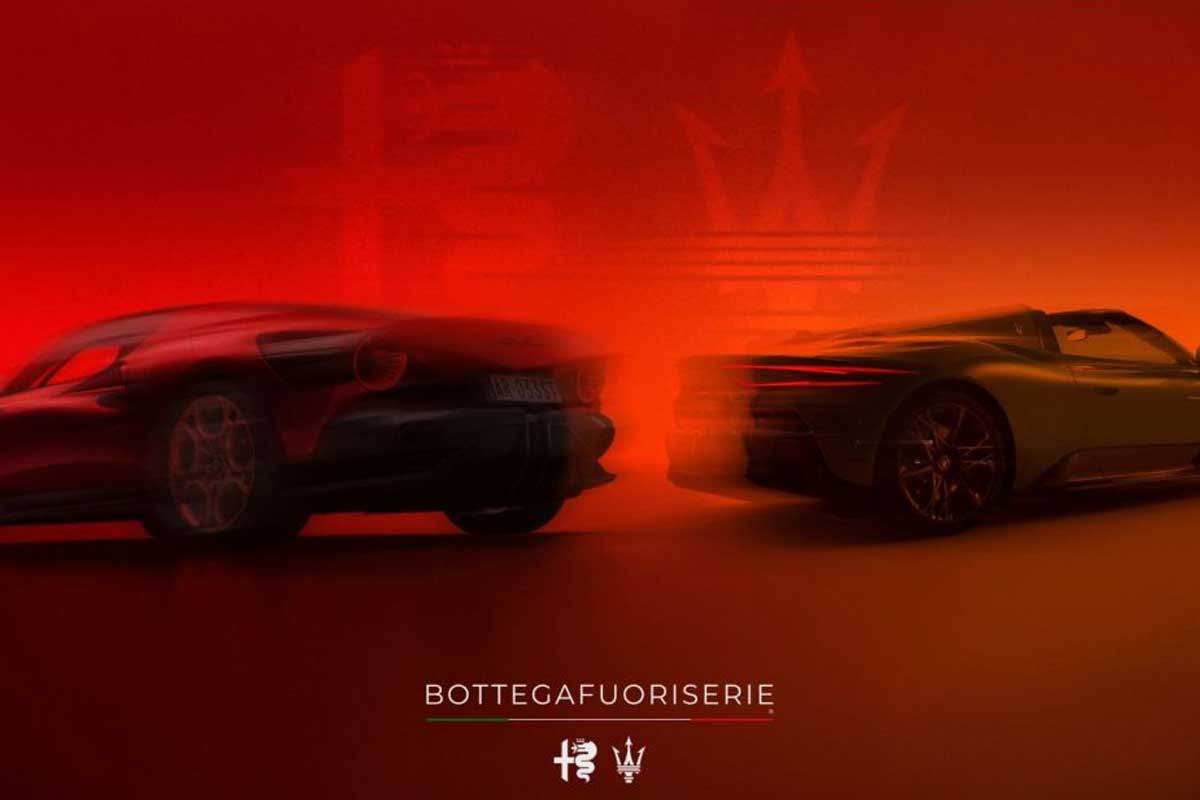
While the new Maserati will not be presented until the end of the first half of 2026, along with the other brands of the Stellantis Group, it is already possible to sketch the broad outlines. Between Santo Ficili's and Jean-Philippe Imparato's statements, and several rumours from Italy, the future of the Trident is beginning to take shape. All the information below is unofficial.
Maserati and Alfa Romeo, closer than ever

Recent announcements suggest that Maserati and Alfa Romeo are renewing their strong technical and strategic ties. The merger of the Fuoriserie (Maserati) and Bottega (Alfa Romeo) customization divisions symbolizes this desire to bring the Group's two premium and luxury brands closer together. A strategy that could, in time, foster industrial and technological synergies, while maintaining their distinct identities.
Future models: a clearer range (unofficial)
Thanks to the information gathered, we can already sketch out the future Maserati catalog, between emblematic models and logical renewals.
| Model | Plant | Platform | Start of production | Estimated end |
|---|---|---|---|---|
| Maserati MC20 / MCPura | Modena | Dallara carbon chassis | 2020 | ~2030 |
| Maserati Grecale | Cassino | Giorgio Evo | 2022 | ~2030 |
| Maserati Granturismo | Modena | Giorgio Evo | 2023 | 2035 |
| Maserati Grancabrio | Modena | Giorgio Evo | 2024 | 2035 |
| Maserati Levante (II) | Cassino | STLA Large | 2028 | ? |
| Maserati Quattroporte (VII) | Cassino | STLA Large | 2029 | ? |
| New Grecale | Cassino | STLA Large | 2030 | ? |
Modena, the beating heart of Maserati exclusivity
In Modena, the MC20 renamed MCPura in 2025will continue to symbolize Italian sporting craftsmanship. Its Dallara carbon-fiber chassis and Nettuno engine will remain Maserati's technological showcase until the end of the decade. A plug-in hybrid system would be difficult to integrate, but a mild MHEV hybrid could extend its life cycle to 2030.
Granturismo and Grancabrio, now products in Modena after a stint at Mirafiori, embody a return to their roots. These exceptional GTs, based on the Giorgio Evo platform, should continue their careers until 2035. Jean-Philippe Imparato hinted that this architecture would remain in service until then, a logical choice for niche models with a high degree of exclusivity.
Cassino, the hub of Maserati volume production
Maserati's industrial future will be played out in Cassino. First with the Grecale, launched in 2022 on the Giorgio Evo platform. This mid-size SUV, a technical cousin of the Alfa Romeo Stelvio, should have a long life until 2030, thanks to mechanical upgrades (4 and 6-cylinder MHEV and PHEV engines).
Next up is the long-awaited new Levante, scheduled for 2028. Also produced in Cassino, it will be based on the STLA Large platform. With its 5-meter length and luxury positioning, it will take direct aim at the Porsche Cayenne. A large 100 % Maserati SUV, without equal at Alfa Romeo, which will play a strategic role in the brand's image.
Finally, a new Quattroporte is in the pipeline for 2029, again based on the STLA Large. Despite the market's disaffection for large sedans, Maserati may want to maintain a presence in this segment, succeeding the Ghibli and Quattroporte, which will be discontinued in 2023, with a radical change of design. A "grand Giulia de luxe", which would make sense in Cassino.
Around 2030, a new Grecale will see the light of day. With its current generation still based on 400 V architecture, a switch to the STLA Large (800 V) platform would be a logical step, to accompany its other technical cousin, the future Alfa Romeo Stelvio.
What powertrains for the future?
While Maserati is preparing for an electric 100 % future, combustion and hybrid versions will remain at the heart of the transition strategy. The new 4-cylinder Hurricane Turbo with 324 hpcould be produced at Termoli, and be available in MHEV and PHEV versions.
As for the legendary Nettuno V6, it won't be disappearing. This engine, a true symbol of Maserati (and Alfa Romeo) know-how, will also be shared with Alfa Romeo in its Quadrifoglio versions. Here again, light or rechargeable hybridization is envisaged to reduce emissions and increase power.
Maserati, between niche and volume
In short, Trident's future could be built around two poles: Modena, for exceptional models and limited series, and Cassino, for larger-volume Maseratis. A strategy designed to preserve the brand's prestige while making it more competitive industrially. See you in a few months to see if this prediction proves correct!
I think this is the best news I've read since the Stellantis era.... Finally an ounce of logic and long term vision!!!!
Ich glaube es erst wenn ich es sehe.
Fast 40 Jahre Erfahrung mit italienischen Ankündigungen.
Wäre immer alles gekommen würden sie jetzt besser dastehen.
Where are the pictures? Nobody wants to read an article about vehicles without pictures!
La Maserati negli USA deve estendere la garanzia di più ed vedrai che ci saranno tantissime vendite e poi ha dei concessionari che remano contro la Maserati , io che ho una levante S dopo due mesi di vita mi hanno cambiato la batteria nuovissima poi un giorno ho detto alla concessionaria che portava io la macchina da loro per un problema loro insistevano che mi mandassero un camion ed hanno detto tanto a te non ti costa niente facciamo pagare la casa madre , questi concessionari remano contro Maserati, quindi state attent